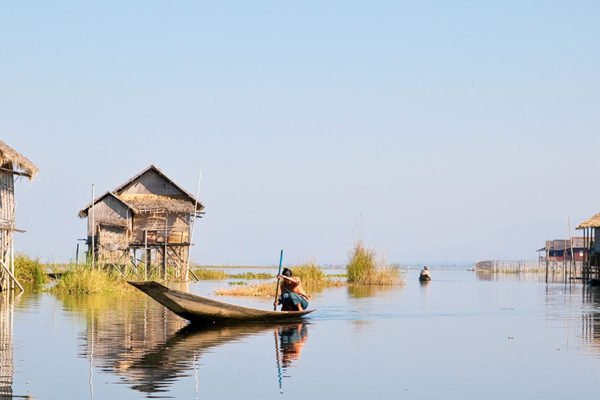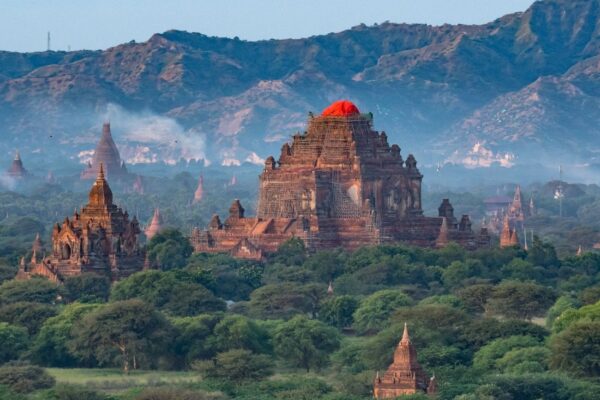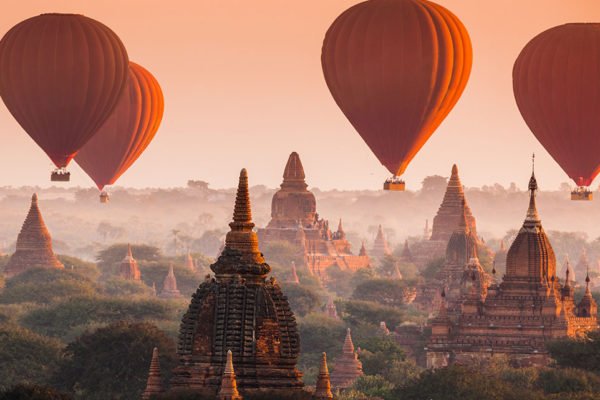Top Famous Pagodas in Yangon That Define the City’s Heritage
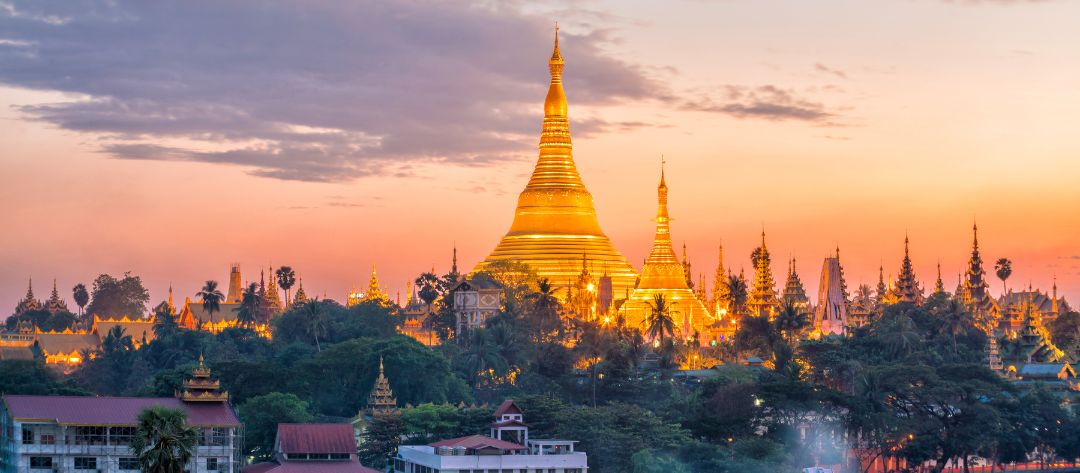
Yangon, the vibrant cultural heart of Myanmar, is a city where tradition and spirituality shape daily life. At its core stand the iconic pagodas, symbols of Burmese history, faith, and architectural beauty. These sacred sites are not only places of worship but also landmarks that reflect centuries of devotion and artistry. Exploring them offers travelers a deep insight into Myanmar’s spiritual identity and cultural richness. In this guide, we highlight the most famous pagodas in Yangon, with context, practical tips, and must-see highlights to help you plan a meaningful and memorable visit.
Why Visit Pagodas in Yangon?
Visiting Yangon’s pagodas offers travelers a journey into Myanmar’s spiritual soul, where golden stupas, sacred relics, and centuries-old traditions reveal the heart of Burmese culture. Beyond their beauty, these temples serve as symbols of faith, identity, and community life.
Historical and Spiritual Significance
Yangon is home to some of Myanmar’s most important pagodas, each carrying centuries of history and spiritual depth. The Shwedagon Pagoda, Myanmar’s golden icon, is believed to enshrine relics from four Buddhas, drawing thousands of devotees daily.
The Sule Pagoda, located in the city center, has been a cultural and political landmark for over 2,600 years. Other remarkable sites include Botahtaung Pagoda, built to house sacred hair relics of the Buddha, and Kaba Aye Pagoda, constructed for the Sixth Buddhist Council. Together, these pagodas reflect the enduring devotion and identity of the Burmese people.
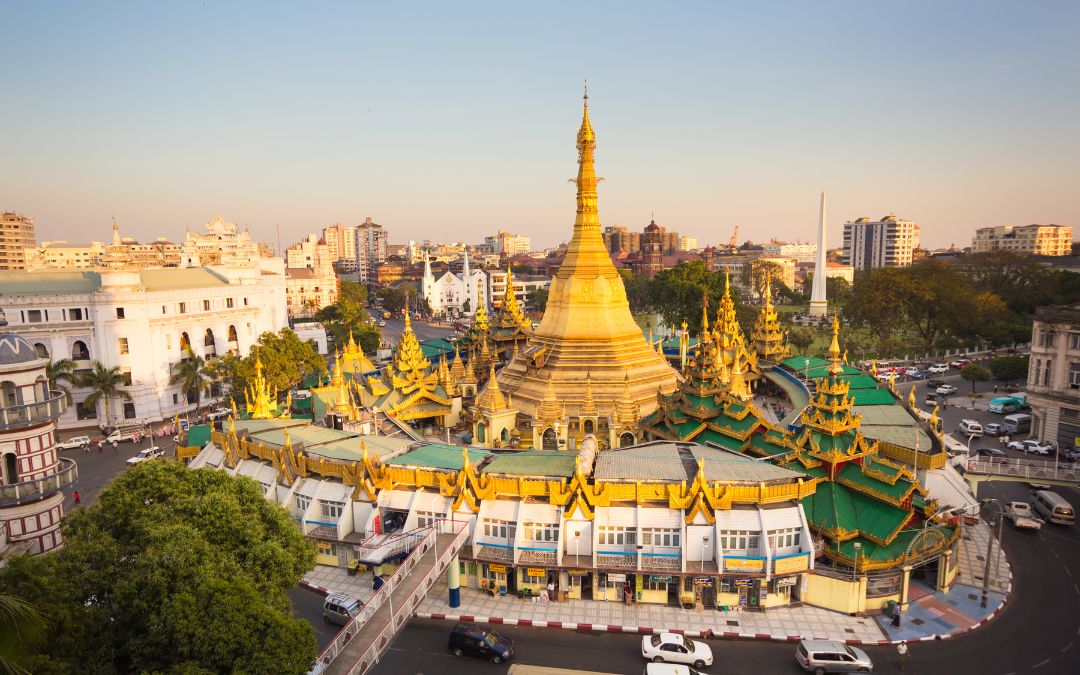
Travelers admire Sule Pagoda as Yangon’s timeless heart.
Unique Architectural Features
Unlike many Southeast Asian temples, Yangon’s pagodas stand out for their distinctive designs. The 99-meter-high Shwedagon Pagoda dazzles with golden layers and a diamond-topped spire. Botahtaung and Maha Wizaya pagodas are unique for their hollow stupas, allowing visitors to explore inside. The Chauk Htat Gyi Pagoda amazes with its colossal reclining Buddha, offering an unforgettable glimpse of Myanmar’s artistic vision.
Living Traditions and Community Role
Pagodas are not static monuments but living centers of devotion, festivals, and learning. Locals gather daily to pray, meditate, and celebrate Buddhist festivals. Sites like Kaba Aye also host meditation centers and museums, while Sule Pagoda continues to serve as both a spiritual and civic hub. Visiting them provides travelers with an authentic connection to Myanmar’s cultural and spiritual heart.
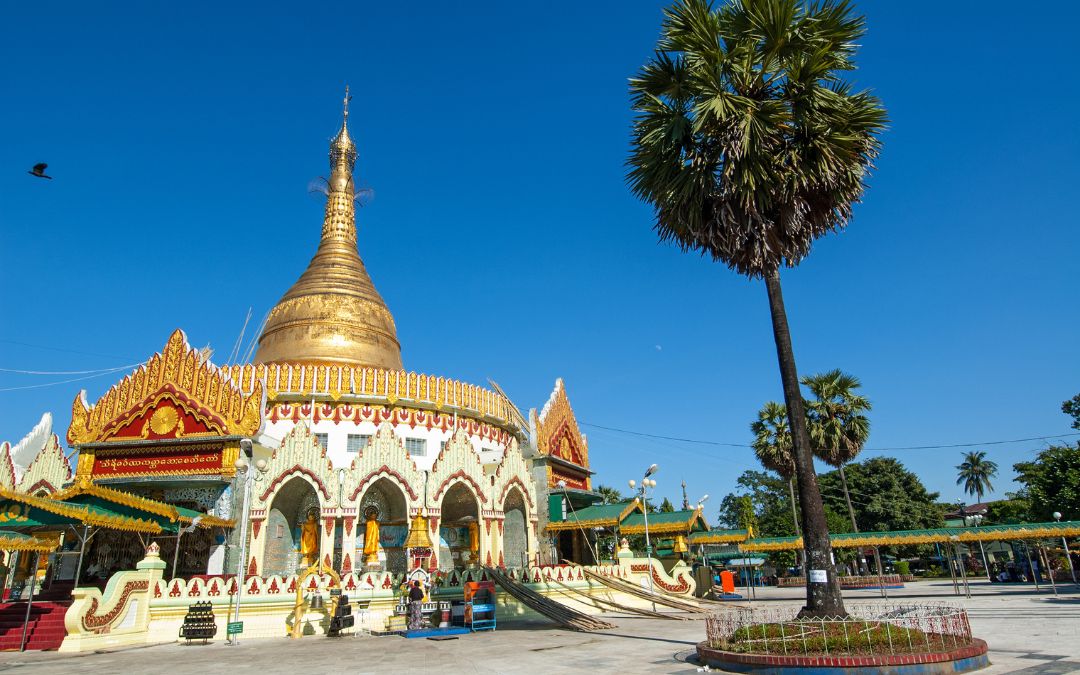
These top pagodas define Yangon’s spiritual essence.
Top Famous Pagodas in Yangon That Define Its Spiritual Heart
Shwedagon Pagoda – The Golden Icon of Myanmar
The Shwedagon Pagoda is without doubt the most revered of all the famous pagodas in Yangon. Rising 99 meters above the city, its golden stupa glitters under the sun and moonlight, making it a breathtaking symbol of Burmese devotion.
Believed to enshrine relics from four Buddhas, including eight strands of Gautama Buddha’s hair, this site draws thousands of pilgrims and visitors daily. The pagoda precinct spans over 100 acres, with four stairways, shrines, planetary posts, giant bells, and Nat spirit shrines. Its spire is encrusted with diamonds, rubies, and precious gemstones, topped with a diamond-studded hti.
Open from 4:00 to 22:00, the pagoda welcomes visitors to witness sunrise serenity or sunset magic. Entry costs 10,000 kyat (≈8 USD) per person, valid all day. Dress modestly, cover your shoulders and knees, and remove your shoes before entering this sacred temple.
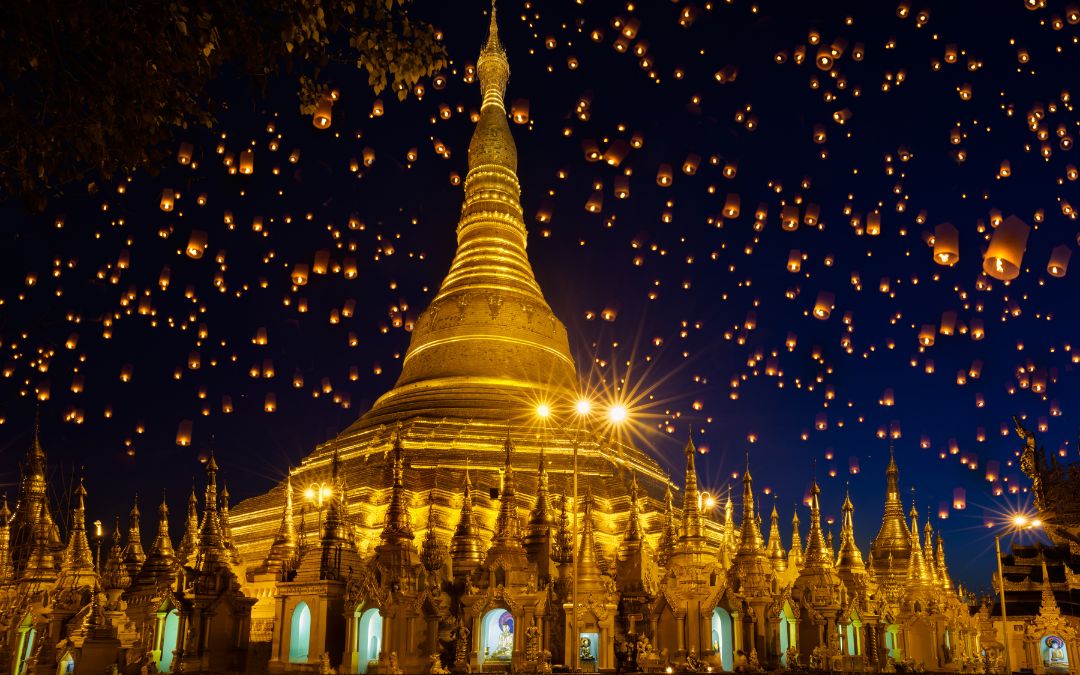
Shwedagon Pagoda shines as Myanmar’s golden icon.
Sule Pagoda – Yangon’s Central Landmark
The Sule Pagoda stands proudly in downtown, blending spirituality with city life. As one of the famous pagodas in Yangon, it carries immense historical weight. Local legend claims it predates Shwedagon, giving it an age of over 2,600 years, though its current form dates to the 15th century.
Its 44-meter-high golden stupa marks the very center of Yangon, and all distances in Myanmar are measured from this spot. Over time, it has become a focal point not just for faith but also for politics, hosting key demonstrations and civic gatherings.
Today, it stands surrounded by colonial-era landmarks like the Supreme Court, yet maintains its spiritual dominance. Visitors can walk here easily from downtown. Entry is about 3 USD, with optional donations encouraged. Despite modernization around it, the Sule Pagoda remains a timeless spiritual and cultural beacon.
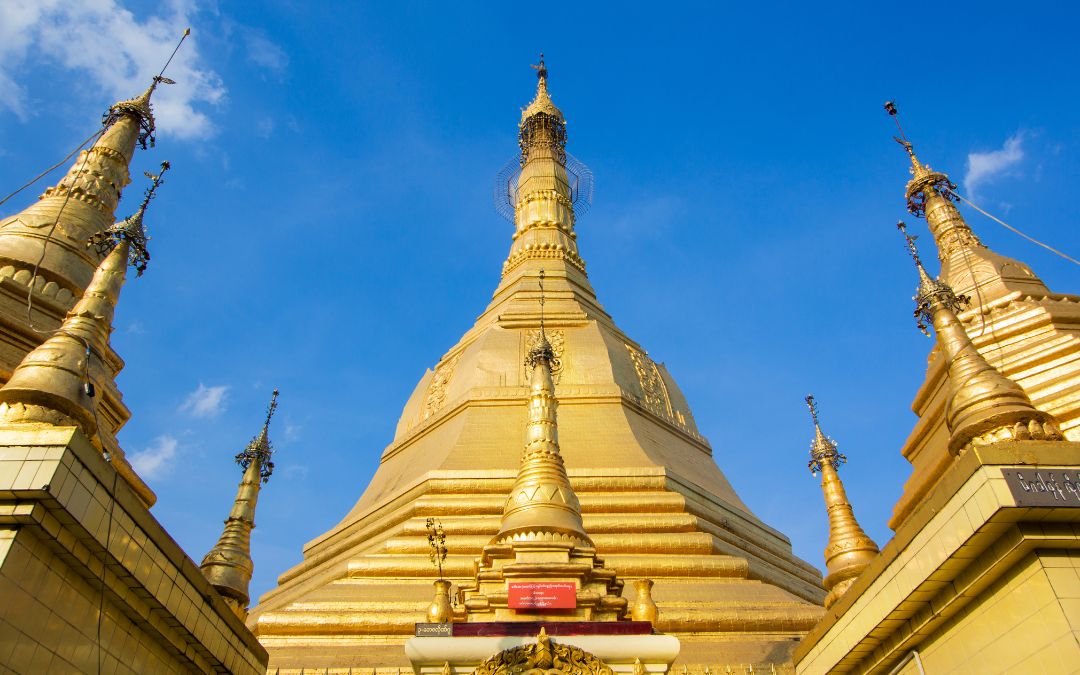
Sule Pagoda stands proudly in Yangon’s city center.
Chaukhtatgyi Buddha Temple – Home of the Reclining Buddha
Among the famous pagodas in Yangon, the Chauk Htat Gyi Pagoda offers a strikingly different experience. Instead of towering stupas, it is home to a reclining Buddha measuring 65 meters long and 16 meters high.
At the base of the statue are 108 sacred symbols, reflecting Buddhist teachings of transcending the three realms. The spacious hall, built extensively with steel, allows unobstructed panoramic views of the statue. Devotees offer candles and flowers, while visitors worship at the shrine corresponding to their birthday, based on Myanmar’s eight-day week astrology.
A vibrant mural illustrating Buddha’s life from prince to enlightenment adorns the wall. The pagoda complex also houses the Shweminwon Sasana Yeiktha Meditation Center and hosts a December festival where locals bring food to monks. Open daily from 6:00 to 20:00, admission is 5 USD per person.
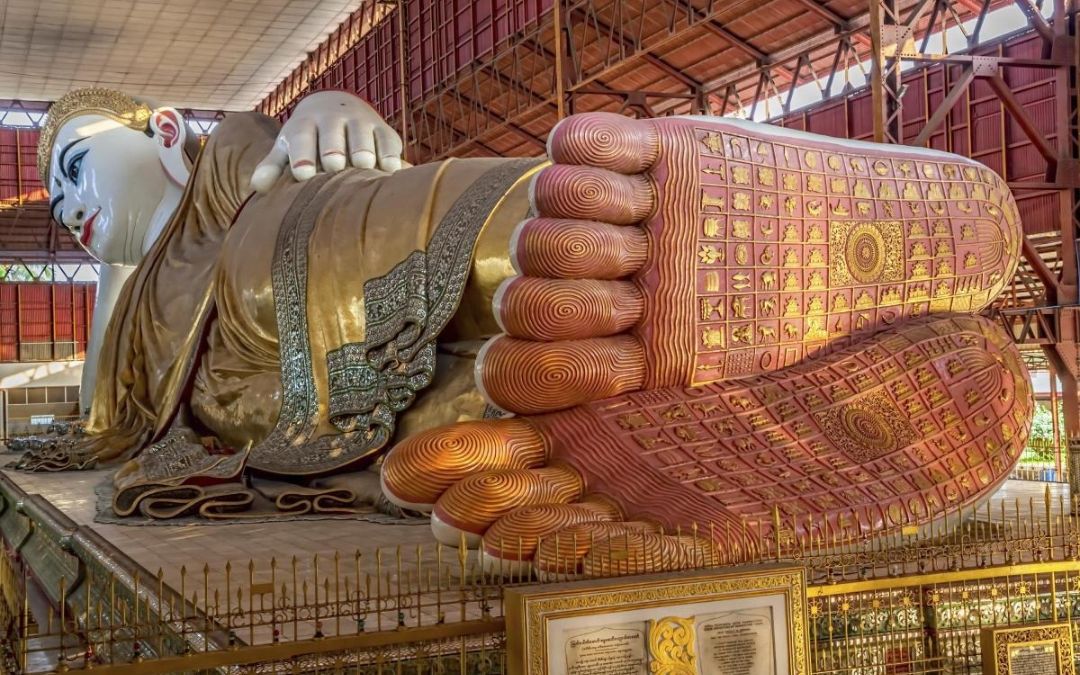
Devotees gather at Chaukhtatgyi Buddha Temple daily.
Nga Htat Gyi Pagoda – The Five-Storey Buddha
The Nga Htat Gyi Pagoda in Yangon is best known for its 14-meter-high seated Buddha image, often called the Five-Storey Buddha. This striking white figure, built in 1900, is dressed in golden regalia and sits before an elaborately carved wooden backdrop. Depicted in the Bhumisparsha mudra (“Calling the Earth to Witness”), the Buddha conveys serenity and power.
The image is housed in a large iron pavilion crowned with a golden dome and a multi-tiered hti spire. At the entrance, visitors pass beneath a gate with a five-tiered Burmese Pyatthat roof, guarded by Chinthe lions. Murals inside portray Buddhist Hell, while a great bell is held by a mythological Naga snake.
Located just across the street from Chauk Htat Gyi Pagoda, it is often visited together with the famous reclining Buddha. The pagoda is open daily from 06:00 to 20:00, and the entrance fee is 2,000 Kyat (≈2 USD), which also includes a bottle of cold water.
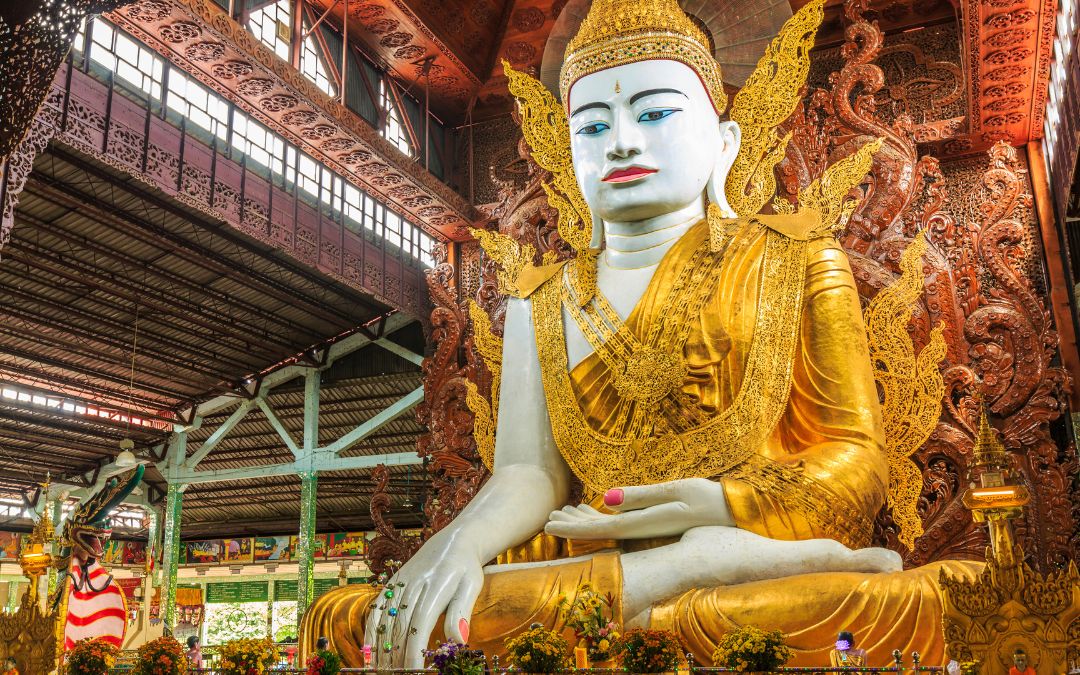
The five-storey Buddha of Nga Htat Gyi inspires awe.
Botataung Pagoda – Sacred Relic by the River
The Botataung Pagoda holds a special place among the famous pagodas in Yangon, not only for its riverside setting but also for its sacred relics. Built by the Mon people over 2,500 years ago, its name means one thousand military officers, commemorating those who escorted Buddha’s hair relics from India.
The stupa rises 40 meters and is unique for being hollow, allowing visitors to walk inside its golden corridors to view relic chambers. Destroyed during World War II, it was rebuilt after the war and continues to be an important site of devotion.
Within the complex stands a Nat pavilion honoring Bo Bo Gyi, a revered guardian spirit. This blend of Buddhist faith and Nat worship gives Botataung a distinct spiritual identity. Open daily, it offers travelers an intimate experience of devotion beside the Yangon River.
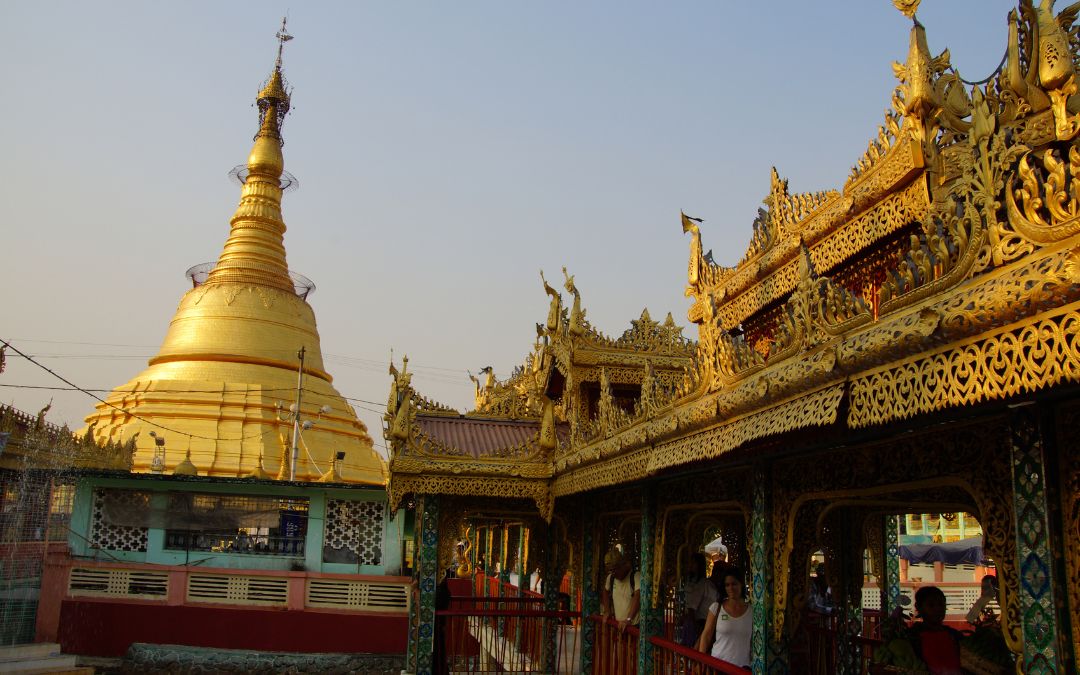
Botataung Pagoda guards a sacred relic by the river.
Kaba Aye Pagoda – World Peace Pagoda
The Kaba Aye Pagoda, or Thiri Mingala Gaba Aye Zedidaw, is one of the most distinctive Yangon Buddhist temples. Built in 1952 by Prime Minister U Nu, it was constructed for the Sixth Buddhist Council (1954–1956).
The stupa measures 34 meters around the base and rises to 34–36 meters high. Its six entrances and six large pillars symbolize the six councils, while golden statues of Gautama, Kassapa, Kakusandha, and Konagamana Buddhas surround the hall. Inside, a silver Buddha statue rests on a pedestal beneath the golden dome, and murals decorate the niches.
The complex also includes monasteries, a Buddhist art museum, and a fishpond where devotees feed catfish to gain merit. Open from 6:00 to 20:00, entry is 5 USD per person. Kaba Aye remains a serene space for reflection, study, and pilgrimage.
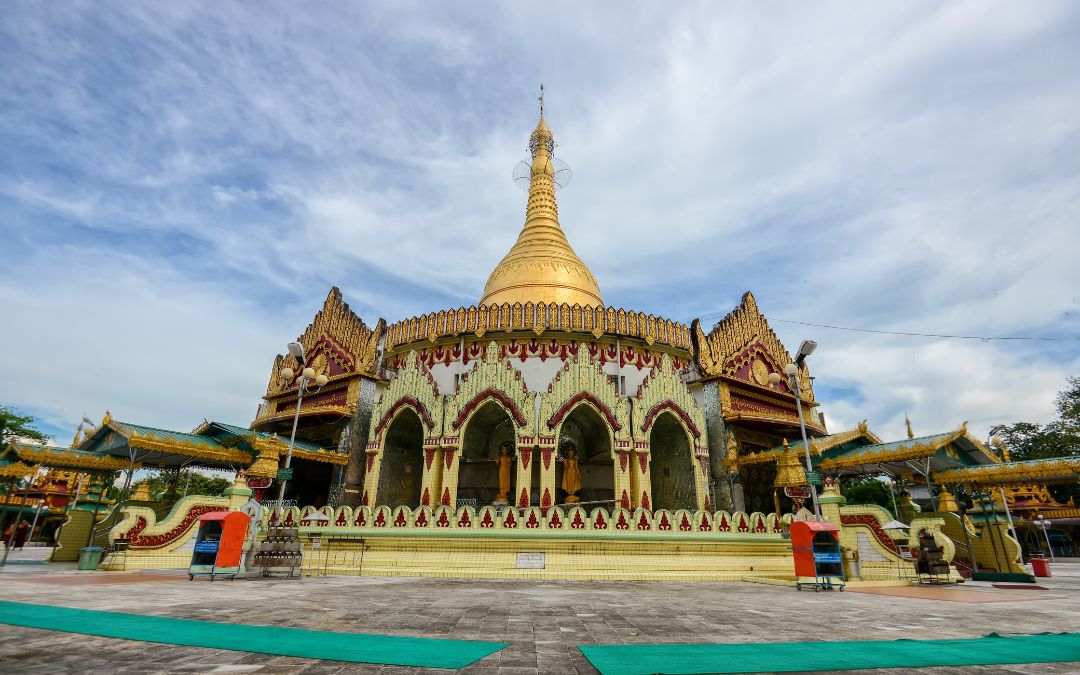
Kaba Aye Pagoda promotes harmony and world peace.
Maha Wizaya Pagoda – Modern Yet Symbolic
Opposite the great Shwedagon, the Maha Wizaya Pagoda blends traditional and modern Burmese artistry, making it a fascinating stop among Yangon heritage sites. Built during the first unification conference of Theravada Buddhism, donations from Buddhists across Myanmar funded it and enshrines relics contributed by the King of Nepal.
Its most notable feature is the hollow main stupa, open to visitors, unlike most sealed stupas. Inside, a circular room houses relics beneath a light-blue domed ceiling painted with animal motifs. Surrounding the base are Buddha statues that add to the sacred atmosphere.
Rising above is an 11-tier hti spire, symbolizing spiritual ascension. With its hilltop location across from Shwedagon, Maha Wizaya offers not only panoramic city views but also a symbolic reminder of Myanmar’s unity in Buddhist faith.

Maha Wizaya Pagoda blends modern form with faith.
Kyauk Taw Gyi Pagoda – The Giant Marble Buddha
The Kyauk Taw Gyi Pagoda in Yangon is one of the city’s most striking modern religious sites, primarily famous for its colossal marble Buddha statue. Located on Mindhama Hill, about 15 km northwest of downtown and close to Yangon Airport, it is easily accessible by taxi (around 5,000 Kyat) or by train to Insein station, followed by a 1.5 km walk. The grounds are open daily from 06:00 to 20:00, and admission is free.
At its center stands the Lawka Chantha Abaya Labamuni image, symbolizing “world peace and prosperity.” This Buddha measures 37 feet (11.3 m) tall, 24 feet (7.3 m) wide, and weighs over 600 tonnes, carved from a single block of white marble transported from Mandalay and enshrined here in 2008.
Protected inside a climate-controlled glass case, it displays the Abhaya mudra, a gesture of reassurance. A richly decorated hall with golden columns and Pyatthat roofs houses the statue, while stairways lined with Naga serpents and guarded by majestic Chinthe lions complete the sacred approach.
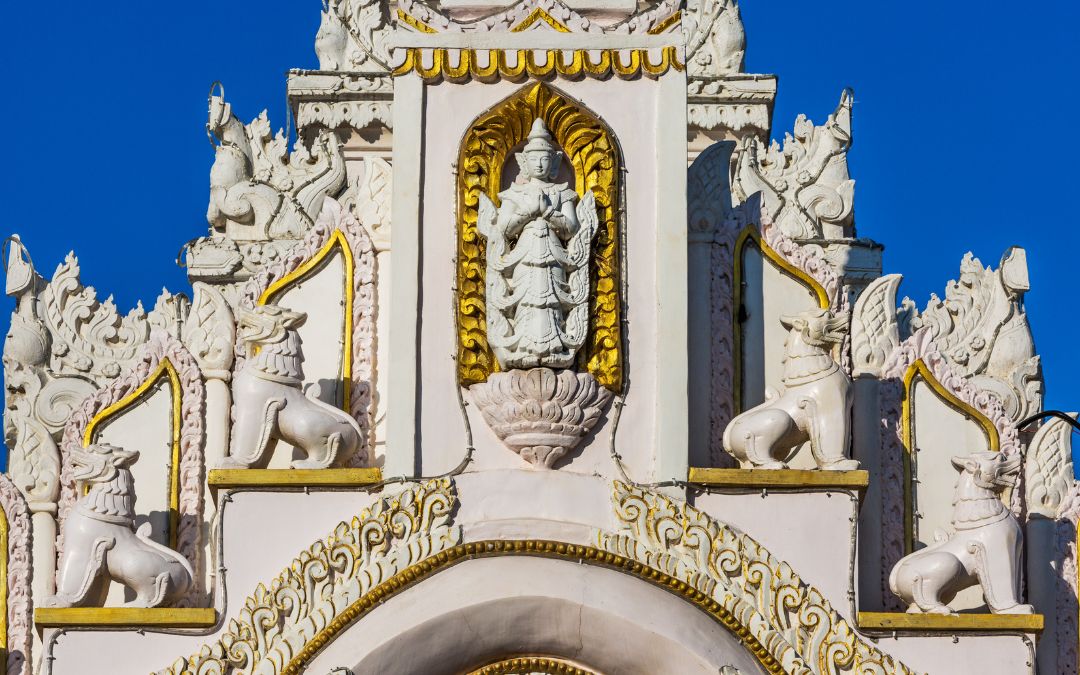
Visitors admire the exquisite architecture of Kyauk Taw Gyi Pagoda.
Practical Tips for Visiting Yangon Pagodas
- Dress modestly by covering shoulders and knees, avoid tight or revealing clothing, and consider bringing a light scarf or longyi.
- Always remove shoes and socks before entering pagoda compounds, and carry them in a small bag to keep with you when moving between shrines.
- Walk slowly and keep your voice low, as loud conversations and rushing around are seen as disrespectful in sacred areas.
- Avoid pointing your feet directly at Buddha statues, monks, or other people; instead, sit cross-legged or tuck your feet to the side when seated.
- Do not touch monks, especially on the head, as it is considered highly disrespectful in Myanmar culture
- Women should avoid physical contact with monks, even when giving donations, instead place items on a cloth or tray provided.
- Ask politely before photographing people, especially monks and worshippers, and never climb on statues or structures for a better view.
- Show respect when walking around stupas by moving clockwise, following the traditional Buddhist practice of circumambulation.
- Be mindful not to block locals who are praying, taking photos, or kneeling in front of shrines.
- Keep phones on silent mode and avoid using them excessively inside prayer halls.
- Refrain from public displays of affection within temple grounds, as they are seen as inappropriate.
- Stay hydrated and protect yourself from the sun, but avoid eating or drinking in the main worship areas.
- Small donations are appreciated and can be placed in offering boxes, supporting the upkeep of the pagoda and monastic community.
How to Include Pagodas in Your Yangon Itinerary
With so many sites clustered across the city, Yangon is ideal for both a focused half-day tour and a comprehensive full-day temple-hopping experience.
To fully appreciate the famous pagodas in Yangon, travelers should dedicate at least a full day. The scale of Shwedagon’s precinct and the distance to Kyauk Taw Gyi near the airport require more than a few hours
Suggested Half-Day Itinerary (Downtown & Sunset)
- Begin at Sule Pagoda, the city’s geographical heart, then explore surrounding colonial-era architecture.
- Continue to Botataung Pagoda on the riverfront, with its hollow stupa allowing a rare walk inside.
- End at Shwedagon Pagoda in late afternoon, staying through sunset to see the golden stupa glowing against the evening sky.

Pilgrims stroll around Botataung Pagoda beside the calm riverside.
Suggested Full-Day Itinerary (Comprehensive Visit)
- Morning: Visit Chauk Htat Gyi Pagoda with its 65-meter reclining Buddha, then cross the street to Nga Htat Gyi Pagoda to see the 14-meter seated “Five-Storey Buddha.
- Midday: Head to Maha Wizaya Pagoda, opposite Shwedagon, then continue to Kaba Aye Pagoda, also known as the World Peace Pagoda, with its museum and merit-making pond.
- Late Afternoon: Conclude at Shwedagon Pagoda for its timeless sunset experience.
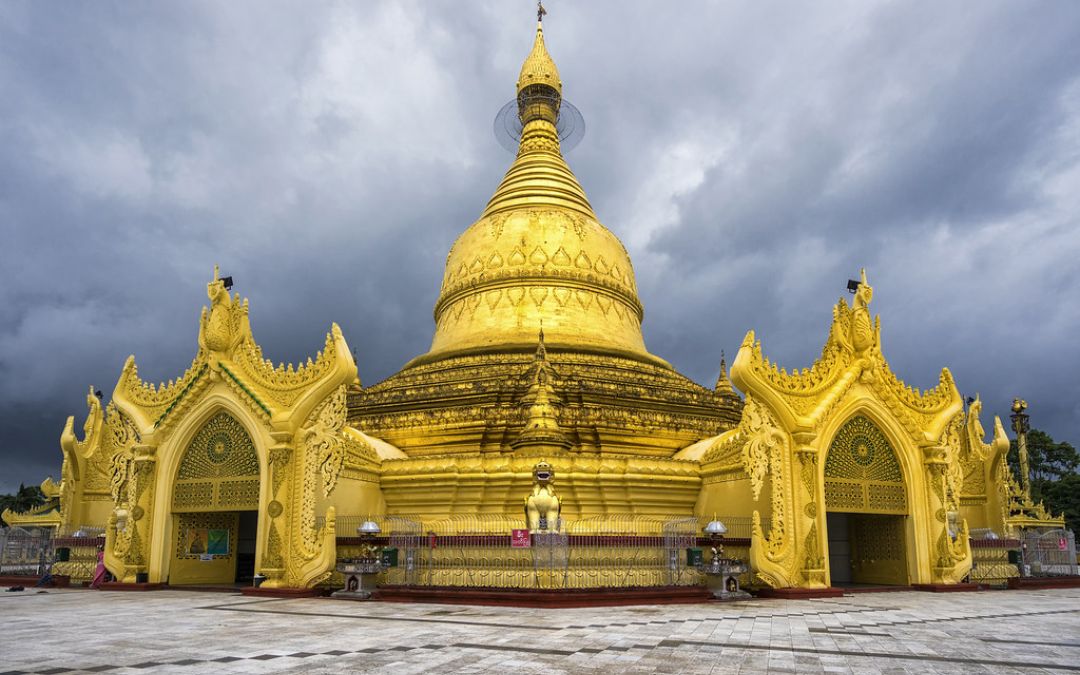
Shwedagon Pagoda glows over Yangon at sunset.
Combining Pagodas with Nearby Attractions
Visiting Yangon’s pagodas can easily be combined with other cultural highlights for a richer experience. A stop at Sule Pagoda pairs perfectly with a stroll through the city’s colonial boulevards and lively downtown markets, where the mix of old and new is most visible.
Near the Shwedagon Pagoda, travelers can take a break at People’s Park or enjoy the graceful, myth-inspired design of Karaweik Hall floating on Kandawgyi Lake. For those with extra time, extending the journey to the Kyauk Taw Gyi Pagoda, located about 15 kilometers northwest near the airport, offers the chance to admire Myanmar’s largest marble Buddha statue, carved from a single block of gleaming white stone.
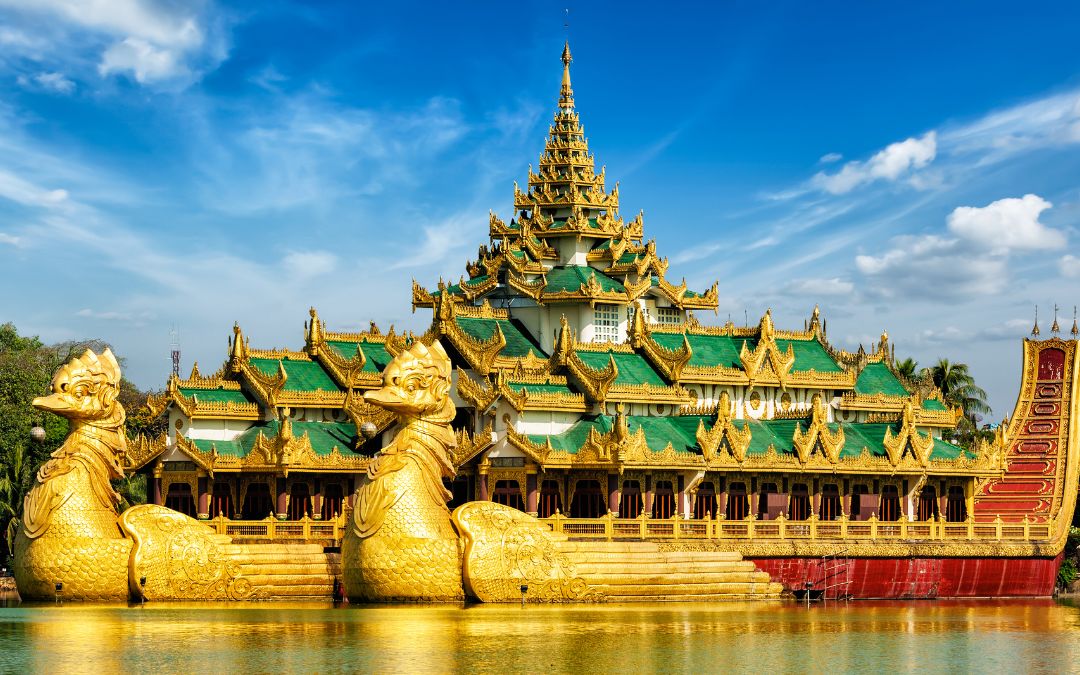
Kandawgyi Lake reflects the golden skyline of Yangon.
The famous pagodas in Yangon represent the soul of Myanmar, blending golden stupas, sacred relics, and centuries of devotion. From Shwedagon’s dazzling presence to the quiet beauty of Nga Htat Gyi and the monumental marble Buddha at Kyauk Taw Gyi, each temple offers its own story of faith and artistry. Exploring them allows travelers to step into Yangon’s living traditions while admiring some of Southeast Asia’s most remarkable architecture.
Approaching these sites with respect—observing rituals, dressing appropriately, and engaging with locals, will make the experience even more rewarding. If you are dreaming of a journey that combines culture, spirituality, and discovery, let Asia Pioneer Travel design a path that takes you beyond sightseeing into the heart of Myanmar’s spiritual life.
